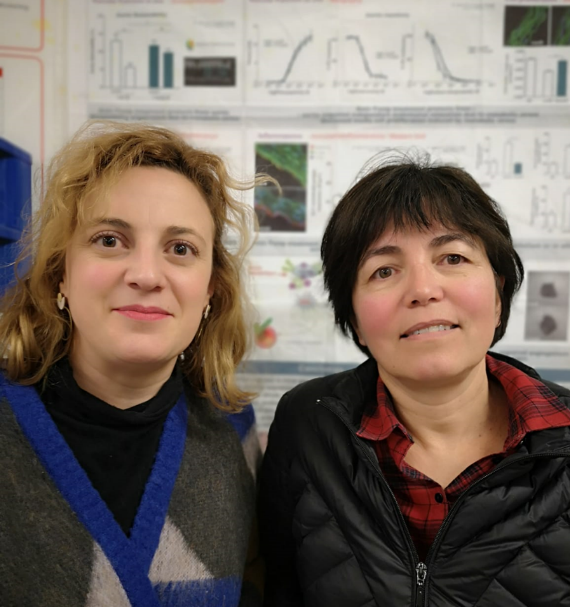
Biography
Identification of the actors involved in arterial aging is a first essential stage in therapeutic approach. Firstly, by creating murine models of aging with a murine model characterized by the endothelial deletion of TXNIP (Thioredoxin-interacting protein), we were able to show that the Thioredoxin/TXNIP system was a major player in aging by protecting the artery from oxidative stress, inflammation and loss of aortic compliance induced by arterial aging. Moreover, using a model of ischemia of the lower limb, we have been able to observe that the endothelial deletion of TXNIP protected from the defect of post-ischemic revascularization during aging, confirming that endothelial TXNIP was a therapeutic target.
In a second step, in collaboration with Dr V Escriou (Biotherapy Team, UMR 8258 CNRS / U 1022 Inserm), we injected nanoparticles carrying TXNIP siRNA that target the endothelium and showed that (like the endothelial deletion model) these nanoparticles protect against arterial aging and its consequences in terms of compliance and post-ischemic revascularization.
This work has been conducted thanks to methodological platforms (animal platform, small animal imaging, faculty and university microscopy department) and scientific collaborations (D Henrion, V Procaccio UMR CNRS 6214 Inserm 1083). The pre-clinical in vivo and ex vivo approaches have been associated with functional imaging by echocardiography-doppler or micro-X-ray tomography (collaboration with Pr C Chaussain, Paris Descartes University) and have been accompanied by studies of gene and proteomics profiles of the aorta, heart and muscles.
In the future, we plan to test whether these nanoparticles carrying TXNIP siRNA that target the endothelium could protect against vascular consequences of cerebral ischemia (collaboration with Pr I Margaill).
Finally, thanks to mechanistic approaches mastered by the team and initiated in vitro on circulating endothelial progenitors, we plan to identify the actors involved with TRX-TXNIP system in this protection.
Key words: cellular stress, aging, vessel, ischemia
5 major international publications
Nivet-Antoine V, Labat C, El –Shamieh S, Cottart CH, Dulcire X, Beaudeux JL, Zannad F, Visvikis-Siest S, Benetos A. Relationship between catalase haplotype and arterial aging. Atherosclerosis 2013; 227: 100-105 (IF : 4.24)
Baron S, Bedarida T, Cottart CH, Vibert F, Vessieres E, Ayer A, Henrion D, Hommeril B, Paul JL, Renault G, Saubamea B, Beaudeux JL, Procaccio V, Nivet-Antoine V. The dual effects of resveratrol on arterial damage induced by insulin resistance in aged mice. J Gerontol A Biol Sci Med Sci 2014; 69: 260-91.. Epub 2013 Jun 22 (IF : 5.96)
Bedarida T, Baron S, Vessieres E, Vibert F, Ayer A, Marchiol-Fournigault C, Henrion D, Paul JL, Noble F, Golmard JL, Beaudeux JL, Cottart CH, Nivet-Antoine V. High protein-low carbohydrate diet : deleterious and cardiovascular effects depend on age. Am J Physiol Heart Circ Physiol. 2014 Jul 11. pii: ajpheart.00291.2014. [Epub ahead of print] (IF :3.34)
Bedarida T, Baron S, Vibert F, Ayer A, Henrion D, Thioulouse E, Marchiol C, Beaudeux JL,Cottart CH, Nivet-Antoine V. Resveratrol decreases TXNIP mRNA and protein nuclear expression with an arterial function improvement in old mice. J Gerontol A Biol Sci Med Sci 2016 Jun;71(6):720-9. (IF :5.96)
Bedarida T, Domingues A, Baron S, Ferreira C, Vibert F, Cottart CH, Paul JL, Escriou V, Bigey P, Gaussem P, Leguillier T, Nivet-Antoine V. Reduced endothelial thioredoxin-interacting protein protects arteries from damage induced by metabolic disorders. FASEB J. 2018 Jan 17:fj201700856RRR. doi: 10.1096/fj.201700856RRR. [Epub ahead of print] (IF :5.5)


